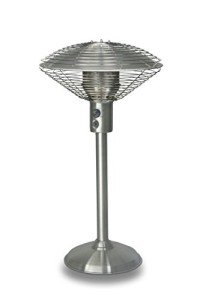Alfresco Heating: Transforming Outdoor Spaces into Year-Round Retreats
As the desire for outdoor living spaces continues to grow, alfresco heating solutions have actually ended up being significantly popular among property owners and services alike. With the right heater, any patio, balcony, or garden can be changed into a year-round retreat, permitting individuals to enjoy their outdoor areas, despite the season. This post checks out the various types of alfresco heating, their advantages, considerations for installation, and frequently asked questions about these systems.
Types of Alfresco Heating
When it concerns heating outdoor locations, several options are available. Each type provides distinct benefits, depending on the space to be heated and the particular requirements of the user.
1. Electric Outdoor Heaters
- Description: These heaters utilize electric power to produce heat. They can be mounted on walls, ceilings, or used as portable systems.
- Advantages:
- Easy to install and operate.
- No need for gas lines or refueling.
- Usually lower preliminary costs.
2. Gas Patio Heaters
- Description: Gas heaters typically utilize propane or gas and can be freestanding or installed.
- Benefits:
- Provide instantaneous heat.
- Appropriate for bigger outdoor areas.
- Visual appeal with models resembling outdoor fire pits.
3. Infrared Heaters
- Description: These heaters radiate heat straight to objects and individuals instead of warming the air. They can be electrical or gas-powered.
- Advantages:
- Highly efficient, as little heat is lost to wind.
- Suitable for breezy areas.
- Quiet operation.
4. Fire Pits and Outdoor Fireplaces
- Description: Traditional fire pits or built-in outdoor fireplaces provide a comfortable environment while providing heat.
- Benefits:
- Create a centerpiece for celebrations.
- Ecologically friendly.
5. Radiant Heating Systems
- Description: Installed underneath surface areas like decks or patios, these systems warm the floor, creating warmth in the space above.
- Advantages:
- Invisible heating solution.
- Supplies even heat circulation.
| Heating Type | Energy Source | Installation Cost | Heating Efficiency |
|---|---|---|---|
| Electric Outdoor Heaters | Electric | Low to Moderate | Moderate |
| Gas Patio Heaters | Propane/Natural Gas | Moderate to High | High |
| Infrared Heaters | Electric/Gas | Low to Moderate | Very High |
| Fire Pits/Outdoor Fireplaces | Wood/Gas | Moderate to High | Varies |
| Radiant Heat Systems | Electric/Gas | High | Very High |
Advantages of Alfresco Heating
Investing in alfresco heating can significantly improve outdoor experiences. Think about the following benefits:
- Extended Usability: Alfresco heating makes outdoor areas functional throughout the year, even throughout cooler months.
- Increased Comfort: By keeping a comfy temperature, people can take pleasure in outdoor meals, gatherings, or quiet minutes without being prevented by the chilly air.
- Boosted Property Value: Welcoming outdoor spaces can increase the worth of a property, making it an appealing feature for possible buyers.
- Eco-friendly: Many alfresco heating solutions, particularly gas and wood options, can have a lower carbon footprint compared to standard heating techniques.
- Flexibility: With numerous designs offered, alfresco heaters can match numerous outdoor themes and settings.
Considerations for Installation
While alfresco heating presents many advantages, particular elements need to be thought about before setup:
- Size of the Area: Assess just how much space needs heating. Bigger areas may need several heating units.
- Heating Requirements: Different heating types have differing heating capabilities. Identify the appropriate type based on your requirements.
- Installation Location: Evaluate where to install heating systems. Factors such as wind instructions, outdoor furnishings plan, and patio covers can affect efficiency.
- Fuel Source: Choose a heating option based upon available fuel sources (gas, electrical power, wood) and the associated expenses.
- Local Regulations: Be conscious of regional ordinances relating to outdoor heating, especially worrying gas fire pits or open flames.
Frequently Asked Questions about Alfresco Heating
1. How do I pick the best outdoor heater for my space?
Choosing the right outdoor heater depends upon numerous factors including the size of the area, the wanted heating capability, and your spending plan. Evaluate your particular requirements and consider talking to a heating expert for recommendations.
2. Are Outdoor Gas Heaters -efficient than gas heaters?
Usually, electric outdoor heaters are more efficient as they transform many of their energy into heat. Nevertheless, the energy sources and costs can affect total performance, so think about the local electricity and gas rates.
3. Can I use indoor heating solutions outdoors?
No, indoor heating solutions are not created for outdoor use and can pose security threats when exposed to the components. Always go with products specifically developed for outdoor conditions.
4. How do I keep my outdoor heater?
Upkeep will differ based upon the type of heater. The majority of electric heaters need little to no upkeep, while gas heaters might need regular inspection of the gas line and burner assemblies. Follow the producer's standards for specific upkeep pointers.
5. Is alfresco heating safe?
Yes, when set up and utilized properly, alfresco heating systems are safe. Always follow the manufacturer's directions, and keep combustible materials away from heating sources.
Alfresco heating can substantially enhance outdoor living areas, enabling enjoyment regardless of the season. By comprehending the numerous heating options, their benefits, and installation considerations, house owners and organization operators can develop inviting and comfortable outdoor environments. Whether it's for hosting gatherings or taking pleasure in peaceful nights under the stars, the best heating option can change outdoor spaces into a true retreat.

